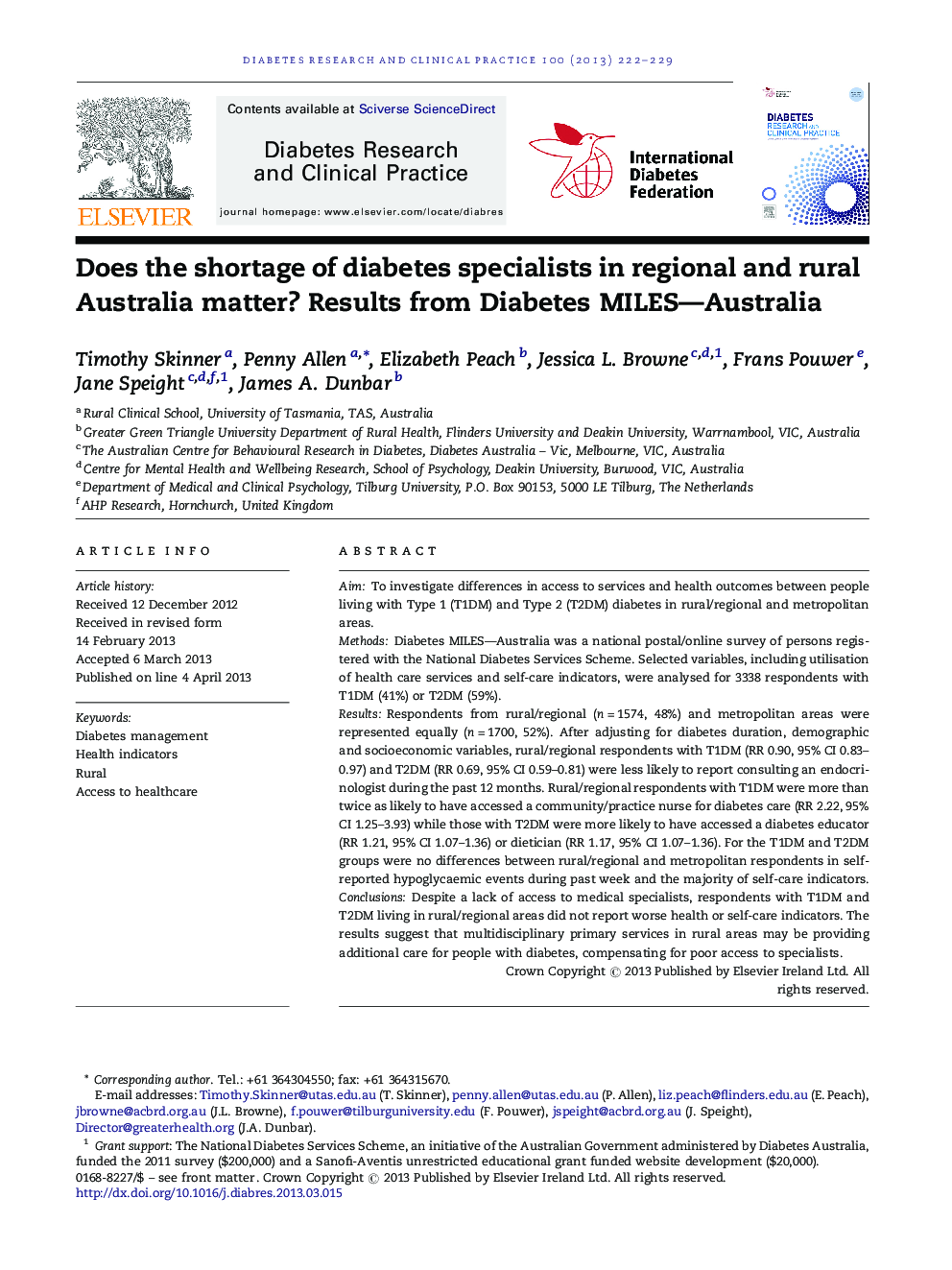| Article ID | Journal | Published Year | Pages | File Type |
|---|---|---|---|---|
| 2796825 | Diabetes Research and Clinical Practice | 2013 | 8 Pages |
AimTo investigate differences in access to services and health outcomes between people living with Type 1 (T1DM) and Type 2 (T2DM) diabetes in rural/regional and metropolitan areas.MethodsDiabetes MILES—Australia was a national postal/online survey of persons registered with the National Diabetes Services Scheme. Selected variables, including utilisation of health care services and self-care indicators, were analysed for 3338 respondents with T1DM (41%) or T2DM (59%).ResultsRespondents from rural/regional (n = 1574, 48%) and metropolitan areas were represented equally (n = 1700, 52%). After adjusting for diabetes duration, demographic and socioeconomic variables, rural/regional respondents with T1DM (RR 0.90, 95% CI 0.83–0.97) and T2DM (RR 0.69, 95% CI 0.59–0.81) were less likely to report consulting an endocrinologist during the past 12 months. Rural/regional respondents with T1DM were more than twice as likely to have accessed a community/practice nurse for diabetes care (RR 2.22, 95% CI 1.25–3.93) while those with T2DM were more likely to have accessed a diabetes educator (RR 1.21, 95% CI 1.07–1.36) or dietician (RR 1.17, 95% CI 1.07–1.36). For the T1DM and T2DM groups were no differences between rural/regional and metropolitan respondents in self-reported hypoglycaemic events during past week and the majority of self-care indicators.ConclusionsDespite a lack of access to medical specialists, respondents with T1DM and T2DM living in rural/regional areas did not report worse health or self-care indicators. The results suggest that multidisciplinary primary services in rural areas may be providing additional care for people with diabetes, compensating for poor access to specialists.
